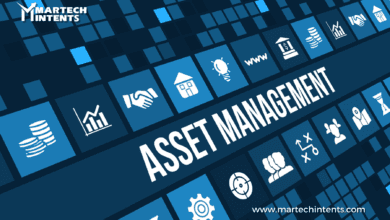How to Secure Your MarTech Stack from Cyberattacks

In today’s digital world, marketing technology (MarTech) tools are essential for businesses to thrive. However, MarTech stacks can also become attractive targets for cyberattacks. With a wealth of valuable customer data stored within these platforms, securing your MarTech stack is no longer an option, it’s a necessity.
This guide will equip you with the knowledge and strategies to secure your MarTech stack and safeguard your valuable business data from cyber threats.
Understanding the Threat Landscape: Why Securing Your MarTech Stack Matters
Cybercriminals are constantly evolving their tactics, and MarTech platforms are increasingly in their crosshairs. Here are some reasons why securing your MarTech stack is crucial:
Data Breaches: MarTech platforms often store sensitive customer data like names, email addresses, and even purchase history. A data breach can have devastating consequences for your business reputation and customer trust.
Malware Infections: Malicious software can infiltrate your MarTech stack and disrupt operations, corrupt data, or even launch further attacks within your network.
Ransomware Attacks: Ransomware encrypts your data, rendering it inaccessible unless a ransom is paid. This can significantly disrupt your marketing efforts and cause financial losses.
Account Takeovers: Hackers can gain access to your MarTech accounts and use them to launch spam campaigns, manipulate data, or steal valuable customer information.
By securing your MarTech stack, you can mitigate these risks and protect your business from the ever-present threat of cyberattacks.
Building a Secure MarTech Foundation: Essential Security Measures
Here are some key steps you can take to secure your MarTech stack:
Strong Passwords and MFA: Enforce the use of strong passwords and multi-factor authentication (MFA) for all MarTech accounts.
Regular Updates: Keep your MarTech platforms and any integrated systems updated with the latest security patches to address known vulnerabilities.
Access Controls: Implement access controls to restrict access to sensitive data within your MarTech stack based on user roles and responsibilities.
Data Encryption: Encrypt sensitive data both at rest and in transit to add an extra layer of security in case of a breach.
Regular Backups: Maintain regular backups of your MarTech data to ensure you can recover information in case of a cyberattack or system failure.
Security Awareness Training: Educate your marketing team on cyber security best practices, such as phishing email identification and password hygiene.
These measures form the foundation for a secure MarTech stack. Securing your MarTech stack is an ongoing process, so consider conducting regular security audits to identify and address any potential vulnerabilities.
Beyond the Basics: Advanced Security Considerations for Your MarTech Stack
As your MarTech stack grows and evolves, consider these additional security measures:
Third-Party Vendor Assessments: Evaluate the security practices of any third-party vendors whose tools integrate with your MarTech stack.
Penetration Testing: Conduct regular penetration testing to identify and address vulnerabilities in your MarTech ecosystem before cybercriminals exploit them.
Security Information and Event Management (SIEM): Implement a SIEM solution to monitor your MarTech stack for suspicious activity and potential security threats.
Securing your MarTech stack requires a layered approach that combines technical safeguards with employee awareness and ongoing vigilance.
Learn more about Selecting the Right MarTech Stack: A Strategic Guide
Conclusion: Protecting Your MarTech Investment with Security
By following these strategies and prioritizing security, you can secure your MarTech stack and safeguard your valuable business data. Remember, MarTech is a powerful tool, but its effectiveness hinges on robust security measures. Invest in security to protect your MarTech investment, maintain customer trust, and ensure the continued success of your marketing efforts in the digital age.




